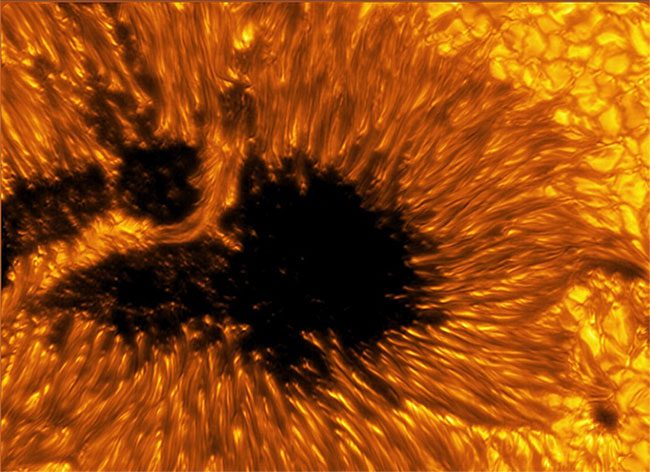Newly captured images of the Sun’s surface reveal sunspots and various other structures with the highest level of detail ever recorded, CNN reported on May 25.

One of the newly released images of sunspots. (Photo: National Solar Observatory, USA).
Eight images were released by the National Solar Observatory (NSO) on May 19, captured using the Daniel K. Inouye Solar Telescope located on Maui Island, Hawaii, USA.
Although the Sun is showing increasing activity trends, with a peak expected in July 2025, these images depict a more serene aspect of the Sun’s surface.
The images of sunspots reveal bright, hot plasma flowing up to the surface, while darker, cooler plasma streams downward. At the chromosphere—the layer of the Sun’s atmosphere above—the thread-like structures indicate the presence of electromagnetic fields.
Another image shows a sunspot that has nearly lost all of the surrounding penumbra. Researchers believe this is the final stage in the “lifecycle” of a sunspot before it disappears.
Researchers also captured “light bridges”—structures that span across the darkest points within sunspots. These complex “bridges” come in various shapes. Scientists interpret this as a sign that the sunspots are gradually fading.
The Inouye Telescope is considered the largest and most powerful ground-based telescope on Earth. Scientists hope this tool will help answer questions about the Sun, including the origins of solar storms and deciphering the complexities of the electromagnetic fields surrounding this celestial body.


















































